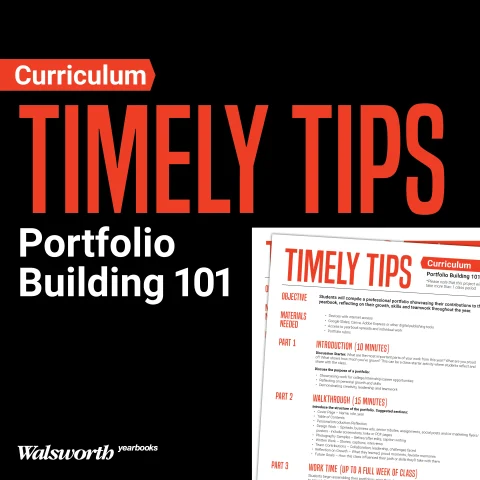During the Great Depression, Roy Stryker from Columbia University was appointed to lead a team of photographers in documenting the hardships of those times. One day, during a discussion about the effects of photographs, Stryker thought a photo of eroded soil would show what water could do to land. One of the photographers, Ben Shahn, replied: “You’re not going to move anybody with this eroded soil – but the effect this eroded soil has on a kid who looks starved, this is going to move people.” Shahn’s comment is the essence of documentary photography, the art of telling a story through photography, which should be taught among the fundamental principles of good yearbook photojournalism. Here are five ideas for understanding and applying documentary photography.
1. Think of your camera as a writing tool. As a photographer, think of yourself as a reporter first. With your camera, you use light instead of pen and paper to tell stories and inform people.
2. Plan ahead to get information. A photographer must understand the situation. Conduct interviews, watch and listen – do not just point the camera and shoot. Interviewing opens up stories you might not find otherwise. On the high school level, you might find out that your 70-year-old counselor plans to ride her bike on a cross-state bike ride; or the award-winning history teacher has a 20-year-old son with disabilities who needs constant care.
3. Tell the truth. Do not set up shots. Your photos must be believed to carry any weight. If you missed the shot you wanted in the art class, return the next day or shoot another class hour or go to a different class. Once you cross the line of faking photos, your credibility will vanish.
4. Look for storytelling images. Find the point where the essence of the story is being told; that is the establishing shot. Look for it. Explore with your camera and look for interaction shots between people in the story. There may be a point where a close-up, detail shot would help tell the story. Hands at work often make a good detail shot.
5. Portraits help tell the story. Look for parallel action going on in your viewfinder. Also, part of the story may make an ending shot. It is not the last shot you take, but seems to sum up the main ideas or emotions of the story.
Even if you are only getting one good shot for a yearbook spread, by shooting in this in depth fashion, you enhance your chances for success. Think of it this way: a reporter needing good quotes will spend an hour interviewing rather than five minutes. Do not be a five-minute photographer. As Cliff Edom, who coined the term photojournalist, used to tell his students at the University of Missouri, “Be a reporter with a camera.”



